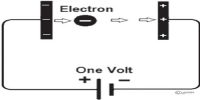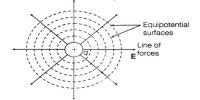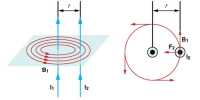Corpuscular Theory: According to Newton, a source of light or a luminous body continuously emits tiny, massless (negligibly small mass) and perfectly elastic particles called corpuscles. They travel in straight lines in a homogeneous medium in all directions with the speed of light.
The corpuscles are so small that a luminous body does not suffer any appreciable loss of mass even if it emits light for a long time.
Light energy is the kinetic energy of the corpuscles. The sense of vision is produced, when the corpuscles impinge on the retina of the eye. The sensation of different colours was due to different sizes of the corpuscles. On account of high speed, they are unaffected by the force of gravity and their path is a straight line. When the corpuscles approach a surface between two media, they are either attracted or repelled. Reflection of the particles is due to repulsion and refraction is due to attraction.
According to this theory, the velocity of light in the denser medium is greater than the velocity of light in rarer medium. But the experimental results of Foucault and Michelson showed that velocity of light in a denser medium is lesser than that in a rarer medium.
Further, this theory could not explain the phenomena of interference, diffraction and polarisation.














